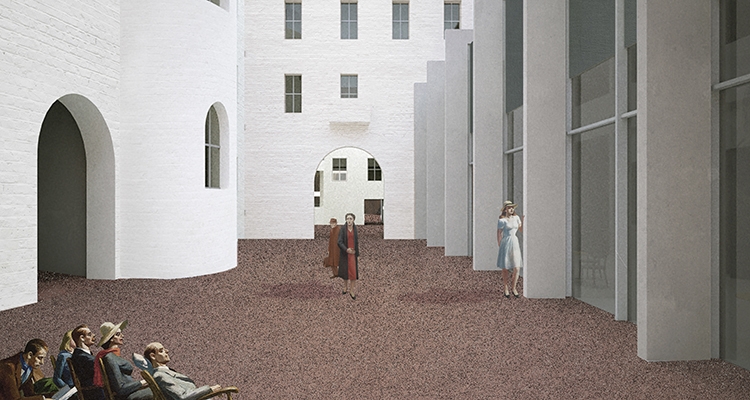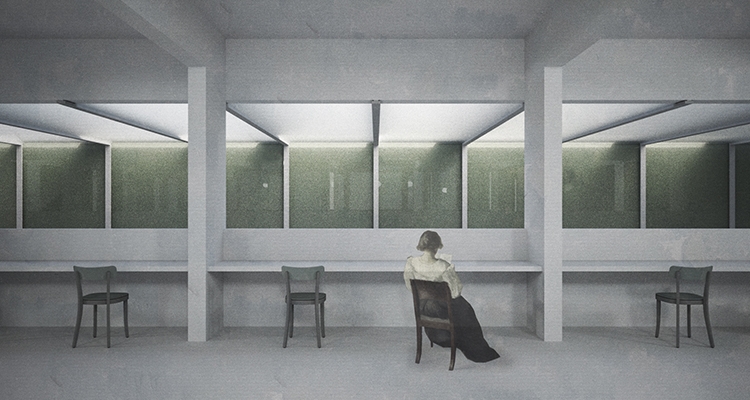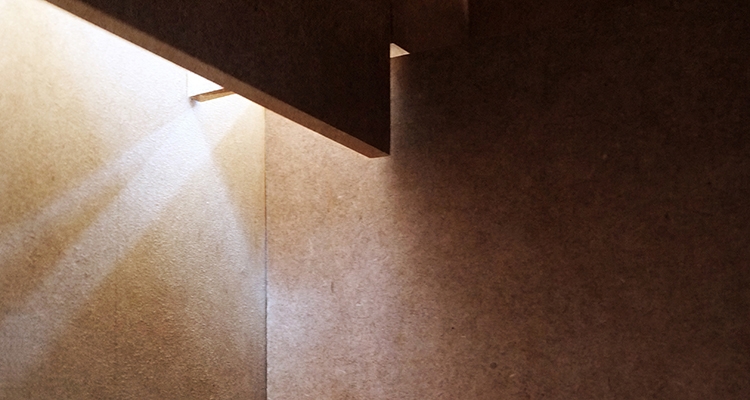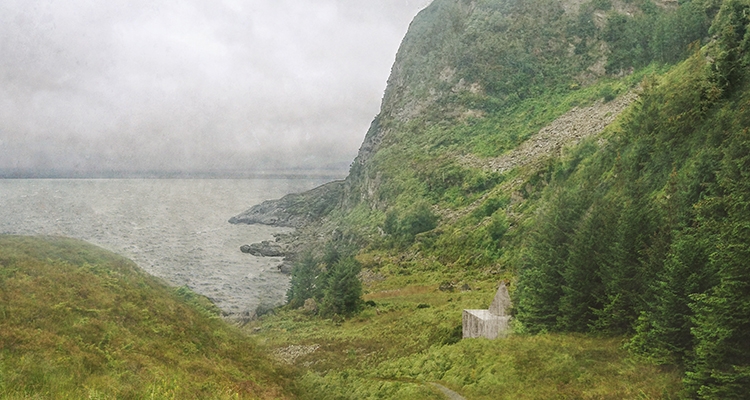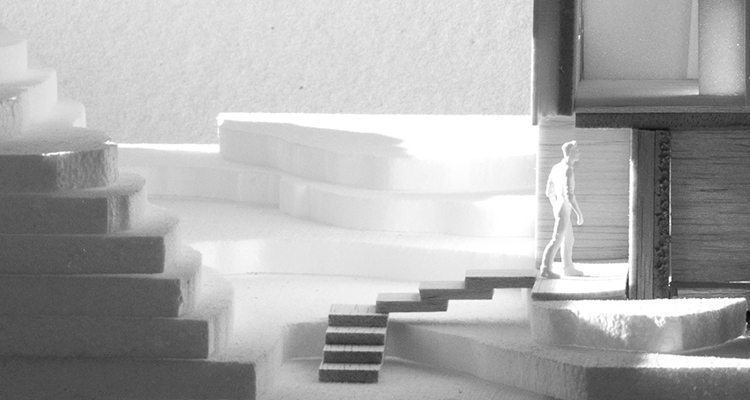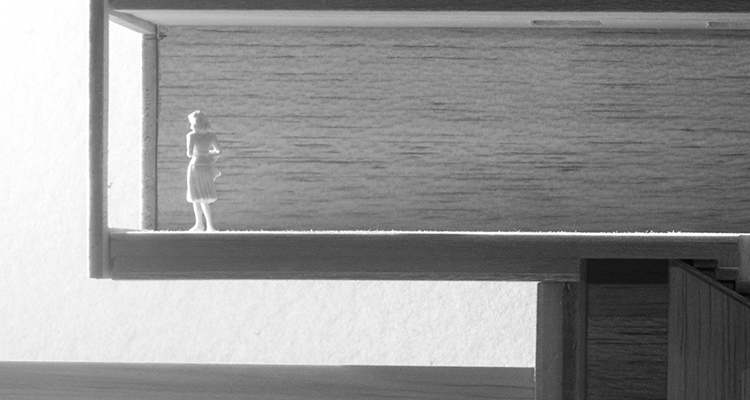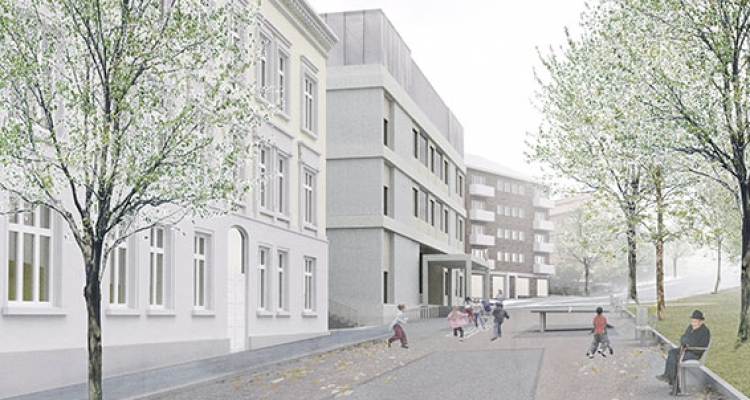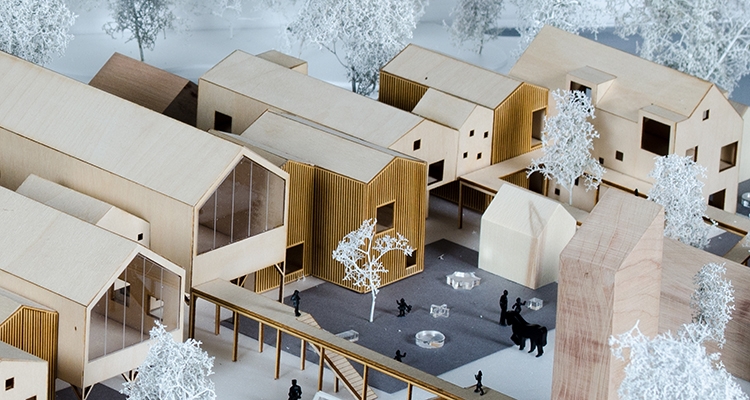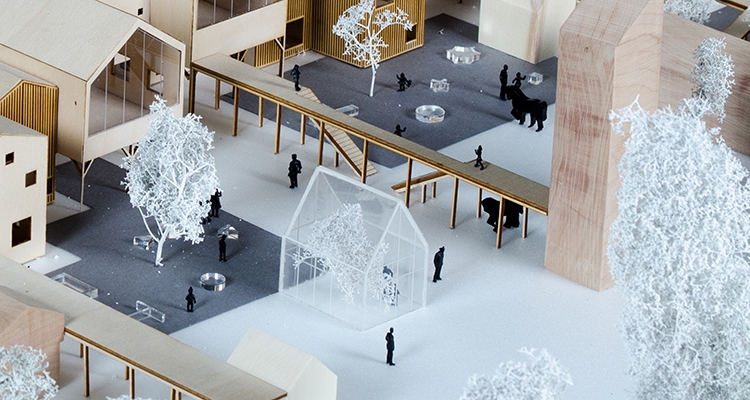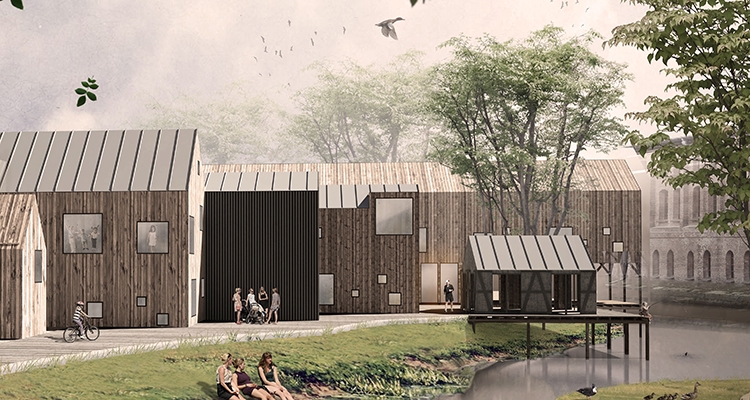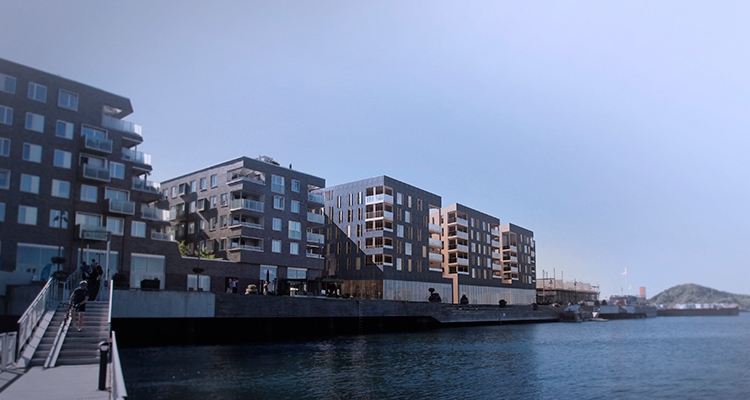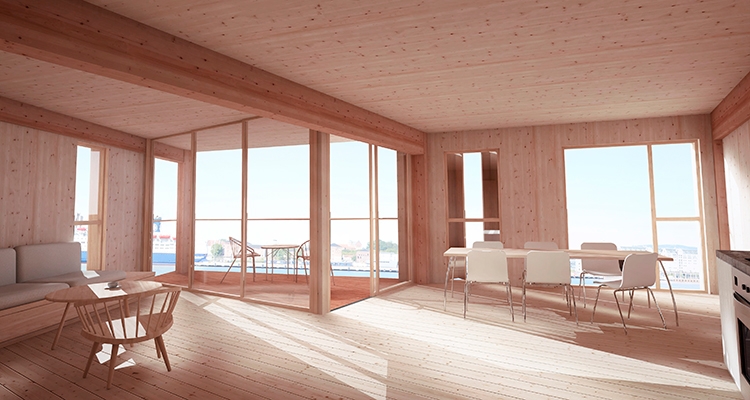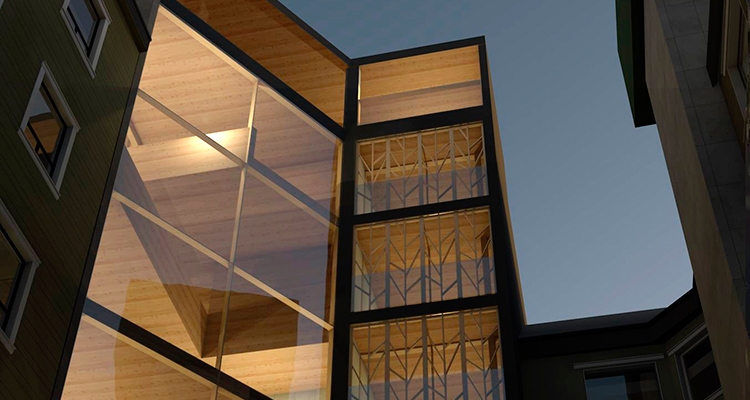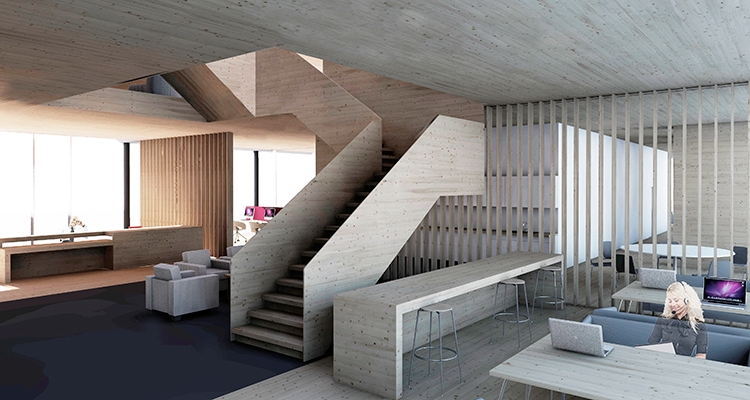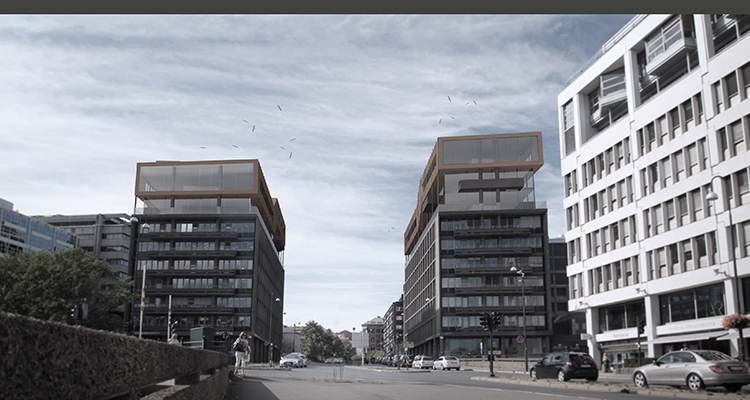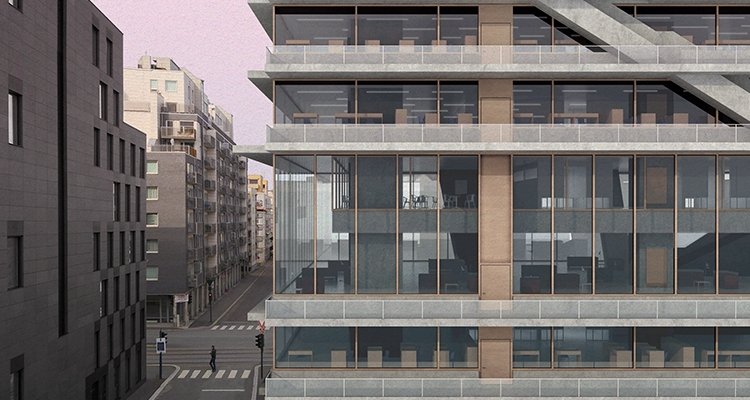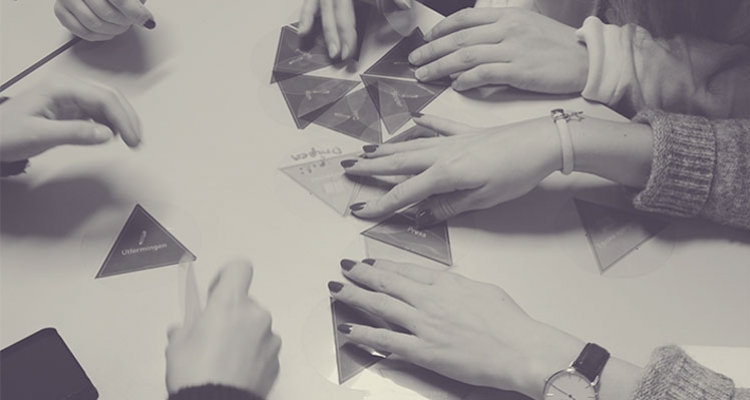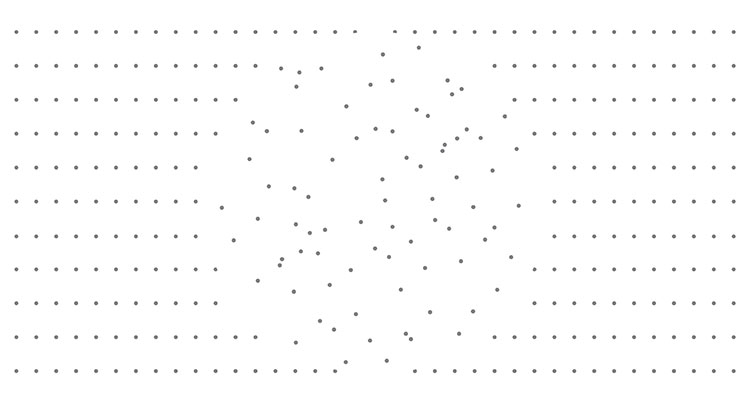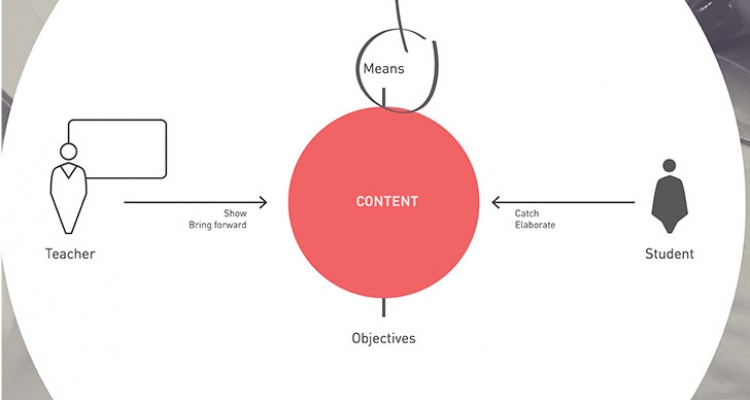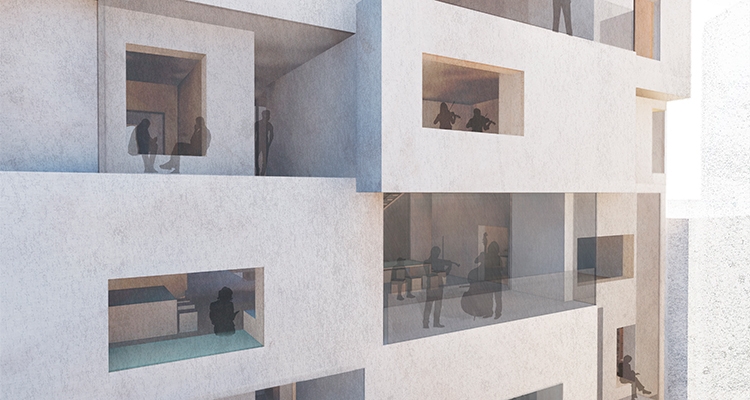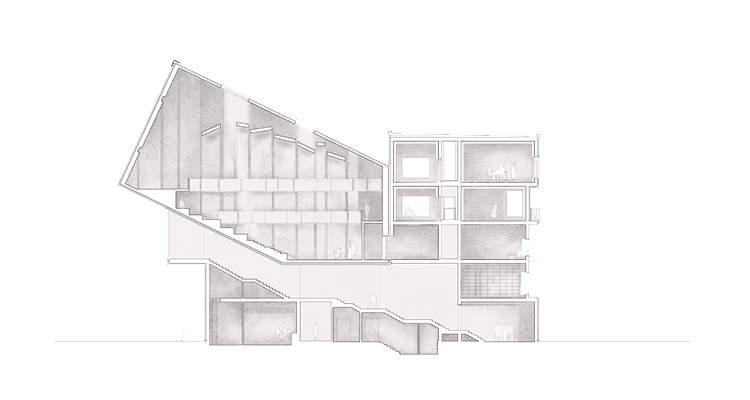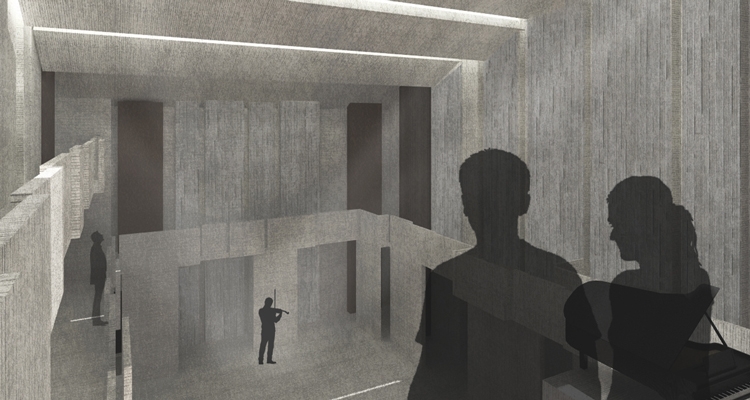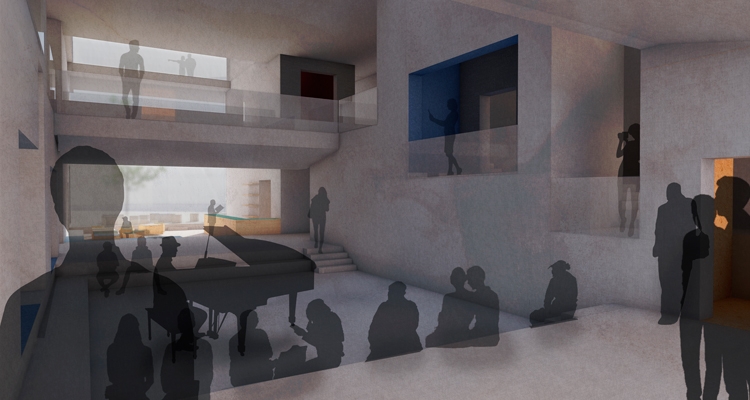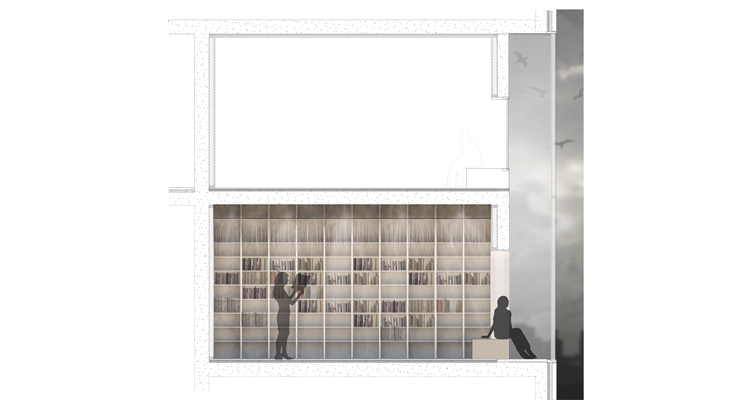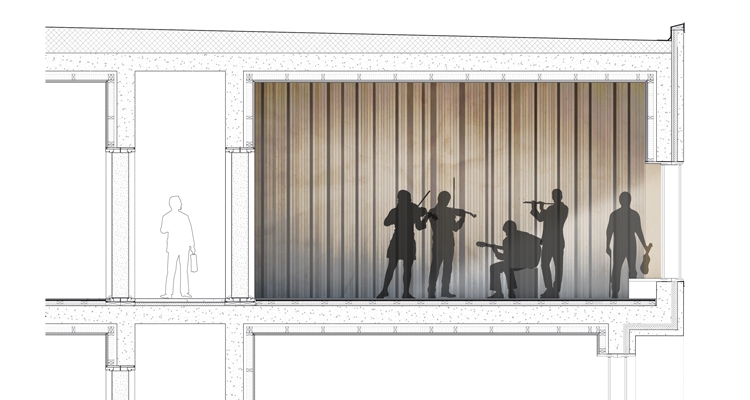Akersgata, the “Fleet Street” of Oslo, is home to both Government and established media houses. A new resource centre for the press provides facilities for freelancers and independent media producers while co-locating press unions and organizations. The transformation of an existing city block gives spatial diversity, and the 1800s buildings serve as a protective layer, providing the centre with privacy and a number of entrances. Two new buildings hold functions that could service a wide range of competing or collaborating media producers.
Diploma project
The sublime landscape of the site forms a monastery garden where the monastic life is lived. A path connects all the important spaces of the monastery and provides a walk of contemplation between the monks’ daily tasks – work, prayer, meals and recreation.
A monastery facilitates a range of diverse spaces with different functional and atmospheric requirements. This project investigates the architectural themes introduced by this program and the site at the island of Selja.
A monastery facilitates a range of diverse spaces with different functional and atmospheric requirements. This project investigates the architectural themes introduced by this program and the site at the island of Selja.
Jeg har undersøkt hvordan en bolig kan ta del i bruken av et utfordrende terreng og med naturlige og bygde adkomster skape et samspill mellom dem. Boligen gis en generøsitet til rommene som møter disse adkomstene for at familien skal kunne være sosiale og ta del i boligens og naturens kvaliteter.
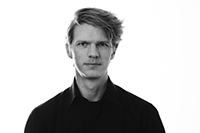

This semester we have been considering how the character of spaces for learning and play could support the school´s programme and use, while informing its relationship to the city, the arrangement of spaces, and ultimately the choice of structure and materials.
The combination of scale and variety of indoor and outdoor functions make kindergartens suitable as a measure to upgrade and revitalize an area’s city fabric and urban situation.
Our proposal of a kindergarten in combination with public offers takes on the task of upgrading the brownfield site of Grünerhagen, which today stands dislocated from the river, and create an unique backdrop along Akerselva’s continuous public riverfront.
Our proposal of a kindergarten in combination with public offers takes on the task of upgrading the brownfield site of Grünerhagen, which today stands dislocated from the river, and create an unique backdrop along Akerselva’s continuous public riverfront.
The infill reintroduces the use of wood in an old urban quarter in Kvadraturen. It explores a collective living situation combining compact apartments with large common spaces.
The superstructures are situated on top of two existing concrete buildings in Vika.
The two office buildings emphasize the difference in use of materials and introduces new principles of organizing a workplace.
The superstructures are situated on top of two existing concrete buildings in Vika.
The two office buildings emphasize the difference in use of materials and introduces new principles of organizing a workplace.
Materialised through a non-figurative arrangement of pillars and slabs, the architecture represents nothing apart from what it does. Accordingly, the potential of an open-ended space is explored as the first principle for the making of a community in the city.
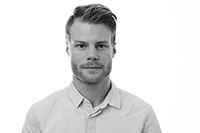
Martin Brandsdal | martin.brandsdal@gmail.com | +47 92460468

Martin Brandsdal | martin.brandsdal@gmail.com | +47 92460468
The project facilitates the interaction between teachers and students through a tool that allows students to know different things from each other, enables them to work in an interdisciplinary way, encourage knowledge awareness and future thinking, support collaboration between students, and values the process as much as the outcome. Through this, the project aims at empowering the students in their learning process, allowing them to be the actors of future changes.
This diploma weaves together a modern production facility, a housing complex, and an indoor allotment garden, and examines the borderline between urban life and local food production. Located in Moss, Norway, we chose a recently approved zoning plan as a starting point for a new approach to developing brownfield sites, introducing diverse functions linked with a continuous green public space.
In weaving these functions together, could we cater for a more pleasant everyday urban life?
Could we harvest happiness?
In weaving these functions together, could we cater for a more pleasant everyday urban life?
Could we harvest happiness?
Music is about something that all people have in common; the ability to listen and to interact. Facilitating for the meetings between the people and the music, we have focused on lowering thresholds, letting both the musicians and the audience choose their own level of participation. In the project we work with contrasting spaces in the creation of spatial sequences. Spaces vary between massive and open, in materiality, acoustic quality, and visual and aural contact.
